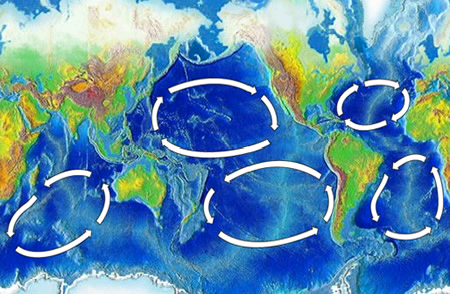Have you ever thought about where your plastic garbage goes?
Shopping for items packaged in plastic may end up costing you more in the long run; that is, if you discard the packaging incorrectly. The same could be true for plastic manufacturers if California passes their latest bill (Assembly Bill 521) on “extended producer responsibility”.
Right now; in San Francisco, California it is against the law to not recycle your trash. That’s right…you; as a law abiding citizen must separate all of your garbage, recyclables, and compostable items. To ensure that all citizens are complying with this law, trash auditors check garbage bins the night before it is scheduled for pickup. If you do not comply after several warnings, the non-complying residents will receive fines and/or have to take educational classes on recycling.
Taking this a step further, California is now working towards making plastic manufacturers responsible for the end of life of their product; ultimately, charging hefty fines for material that is not disposed of properly. (This, after recently making the word biodegradable illegal on labeling)
So who is responsible for all of this plastic pollution that is littering our oceans and filling our landfills? Is it the consumer? Is it the plastic manufacturer? Is it the recycling industry? (Who happens to discard more plastic than it recycles.) California may think they are doing the right thing by penalizing those who are in the path of plastic – from beginning to end – but they’re not supporting or encouraging better solutions…so who’s fault is it, really?
Despite whose responsibility this may be; it leads to a very important question…”Why are we not producing plastic that is biodegradable or even marine degradable? And, (ok, two questions) if there is a solution, why, as consumers and manufacturers, are we not jumping on that solution?”
I think that if there is a solution to this plastic pollution problem and a plastic manufacturer is using a product that is proven to be biodegradable and/or marine degradable, they are showing their end-of-life responsibility and it should be encouraged and rewarded amongst those companies; as well as, consumers who use such a product.
Does such a product exist?
Yes!
ENSO Plastics has created an additive, that when added to the plastic manufacturing process will cause the plastic to become biodegradable; as well as, marine degradable. There are two customizable blends that offer many options to manufacturers – ENSO RESTORE and ENSO RENEW.
This is the solution California needs to recognize, before they start penalizing all of their citizens and plastic manufacturers. California may want to make the people responsible, but I think the state needs to be responsible by allowing new technology and better options for their residents and local commerce.
Wake up California! The solution is staring you in the face!



